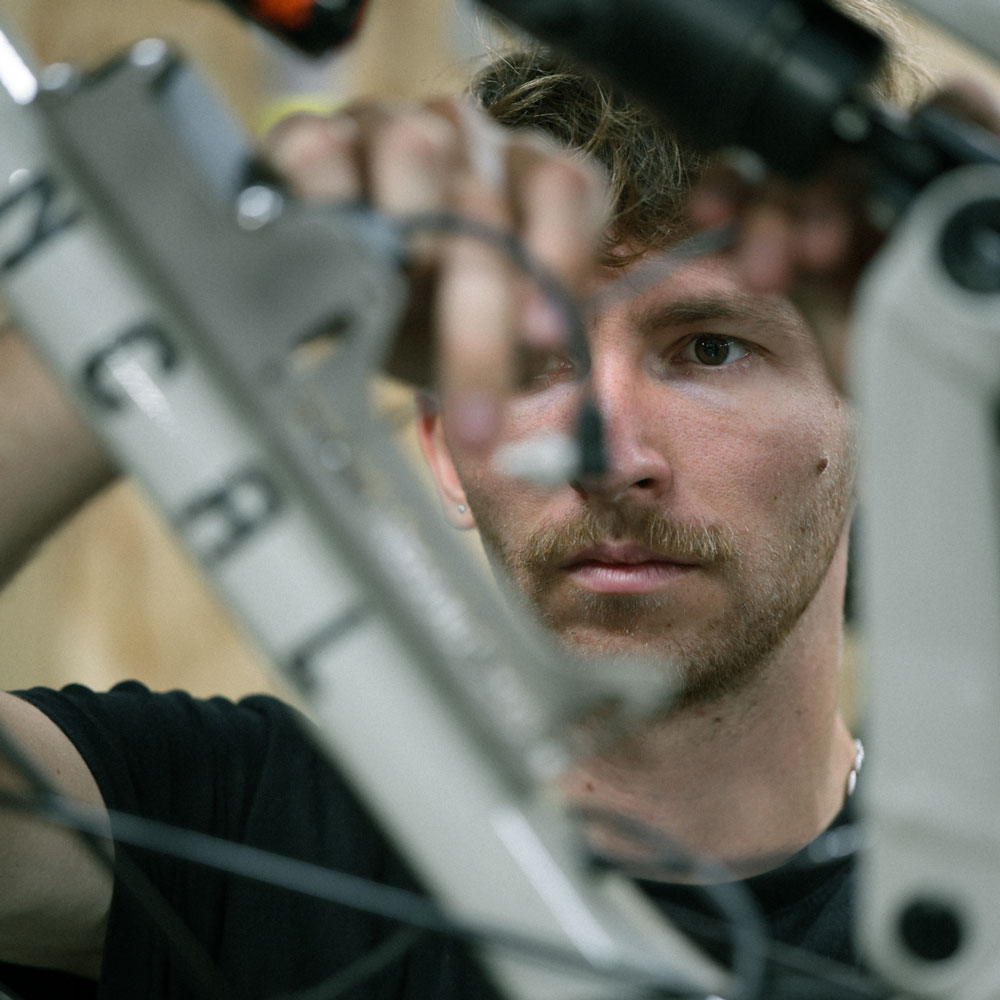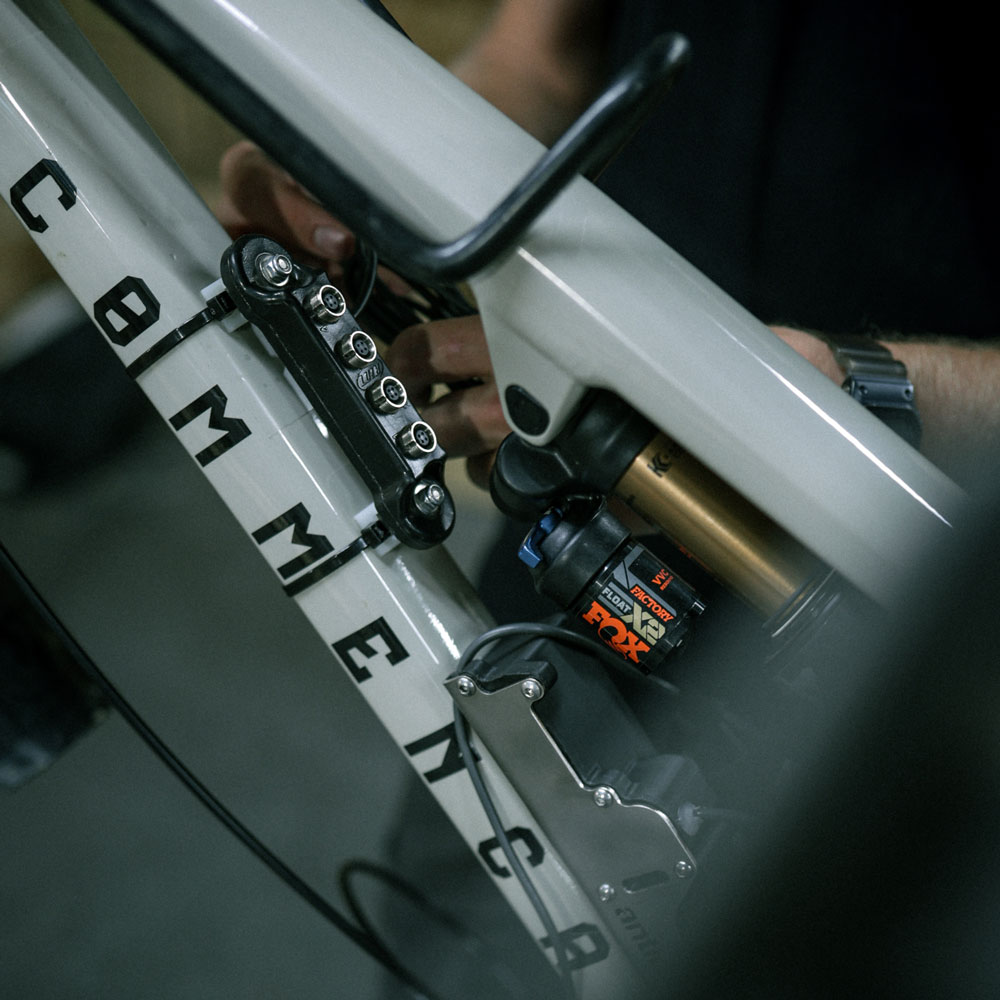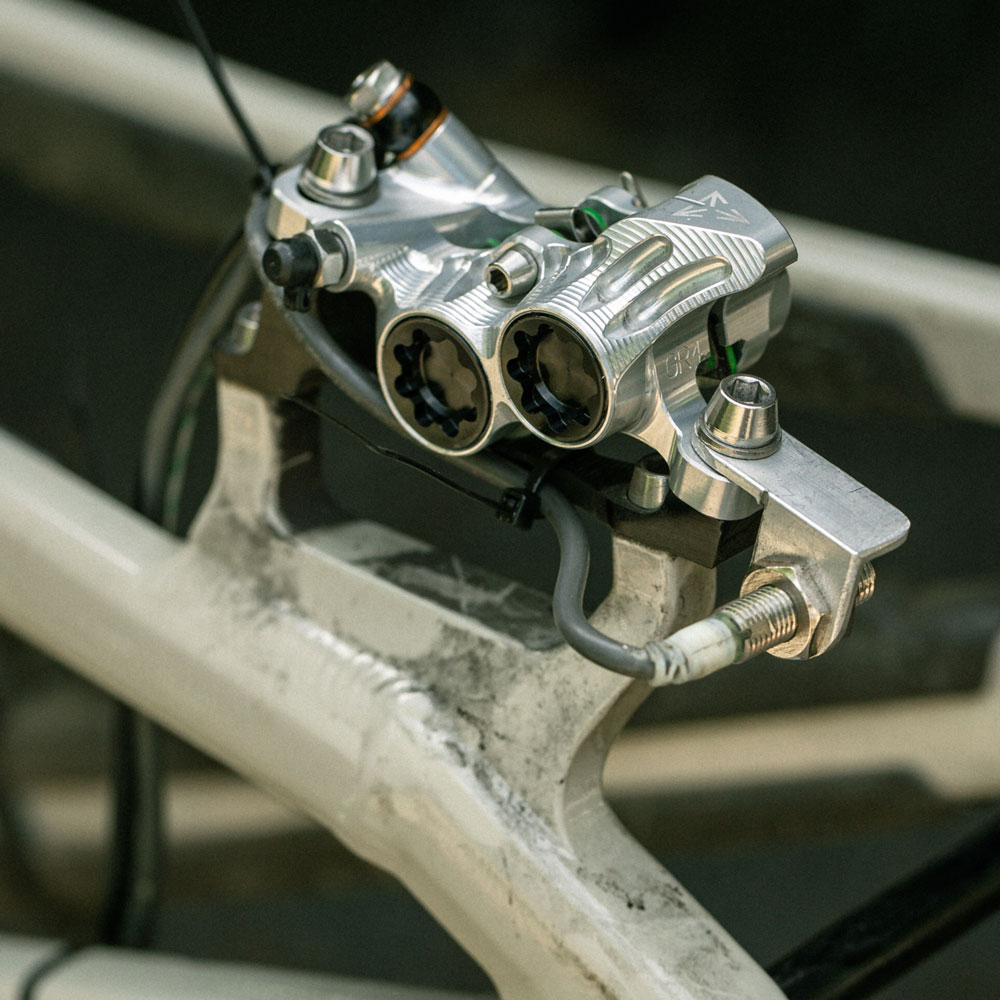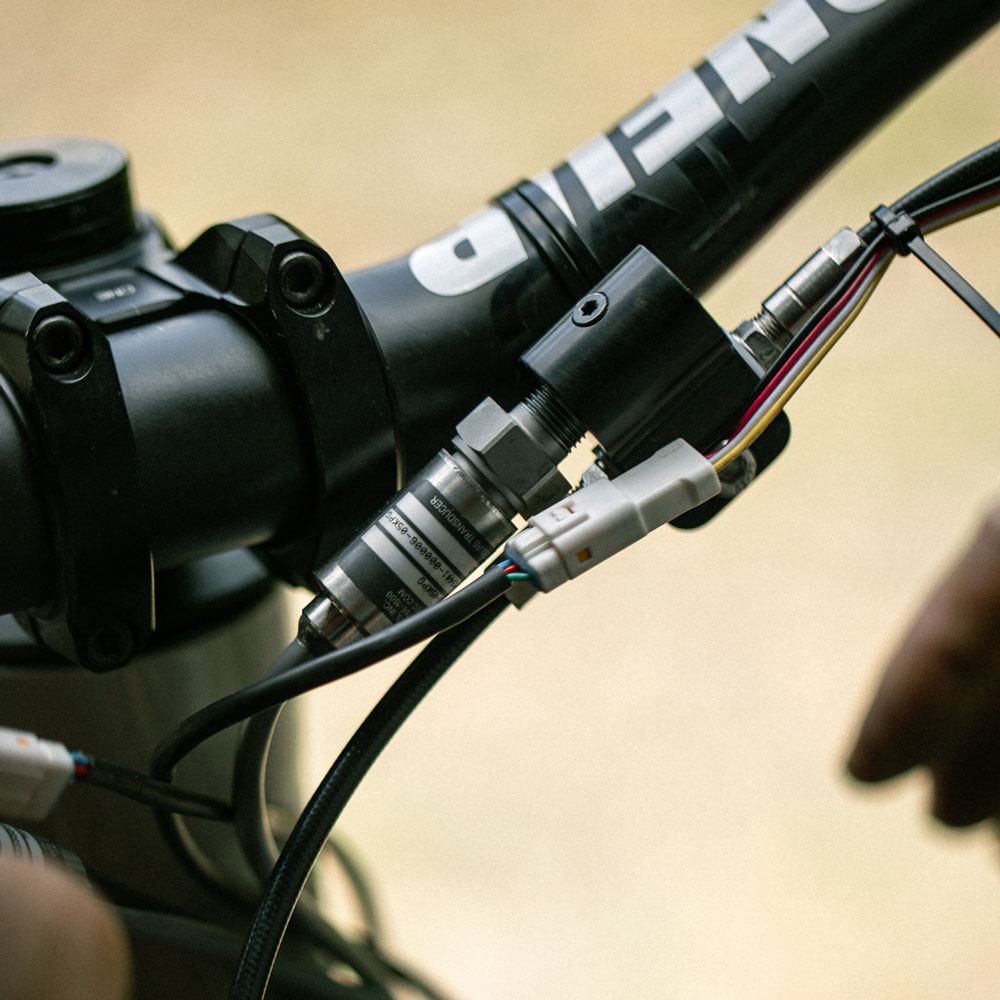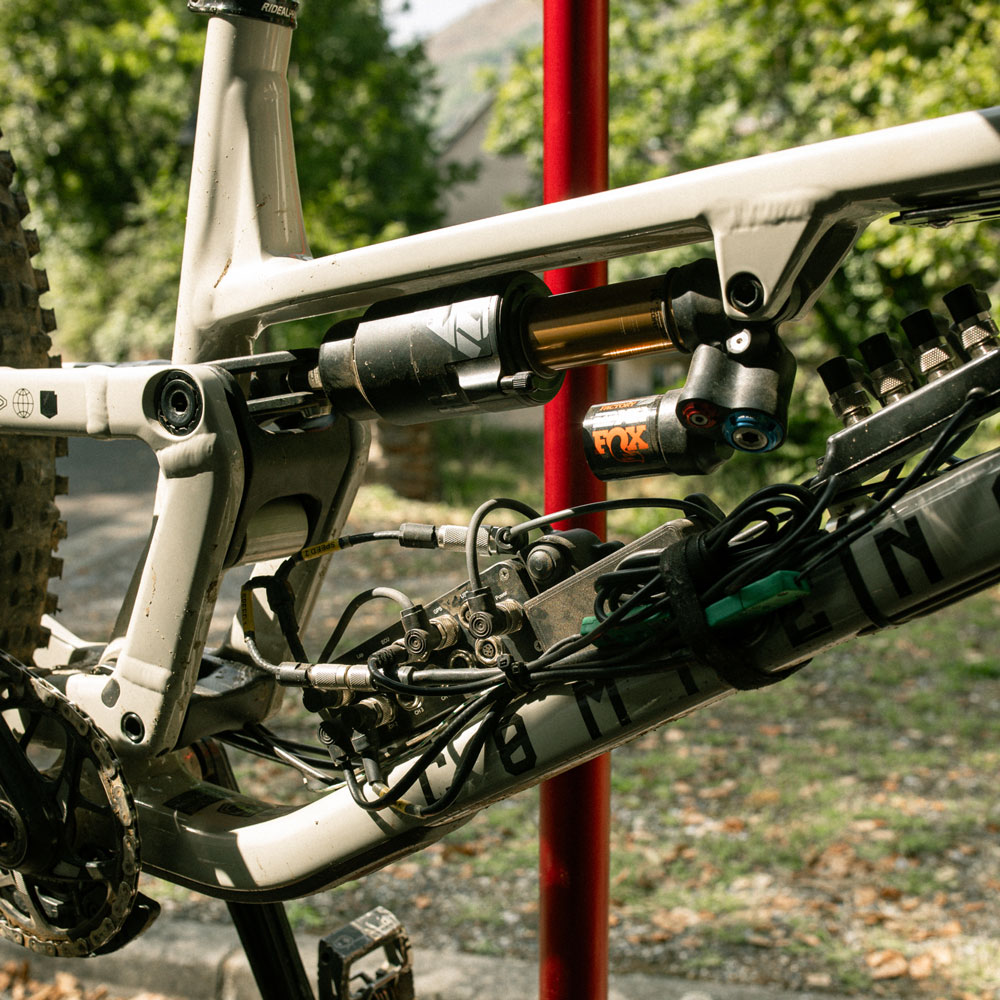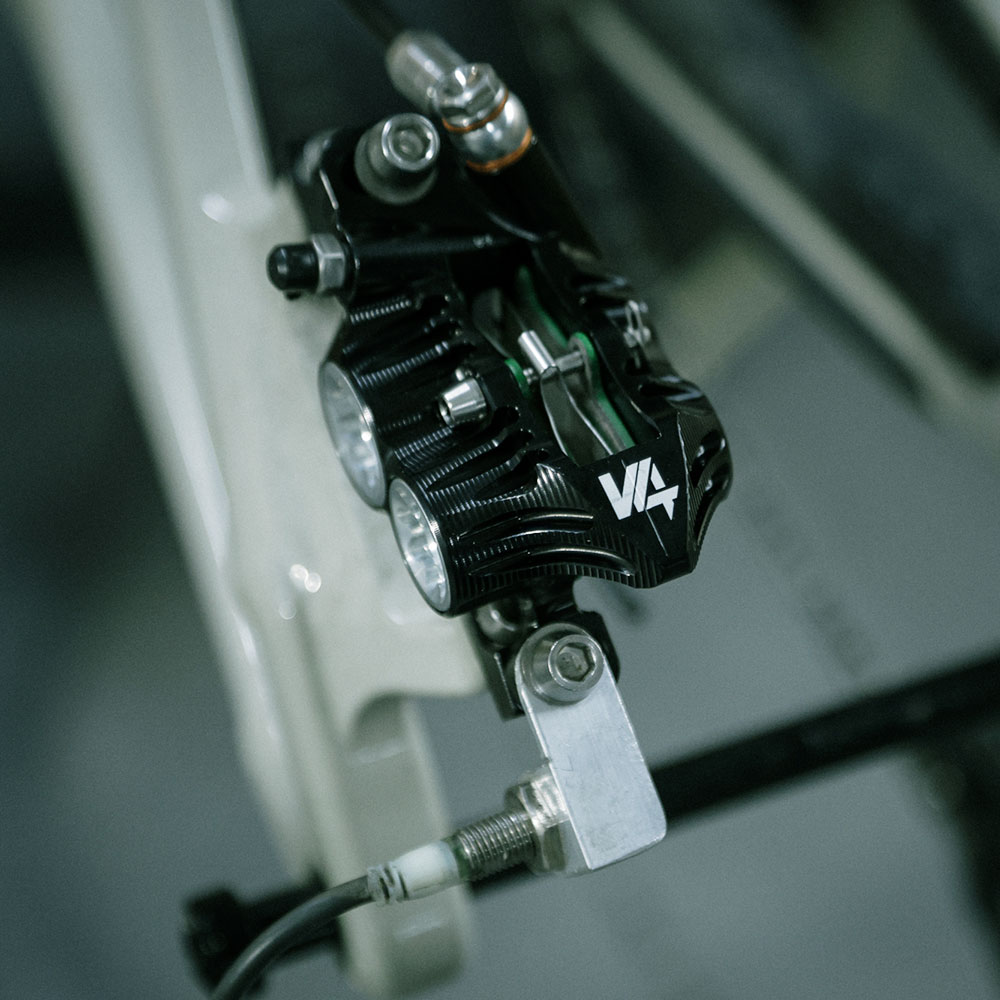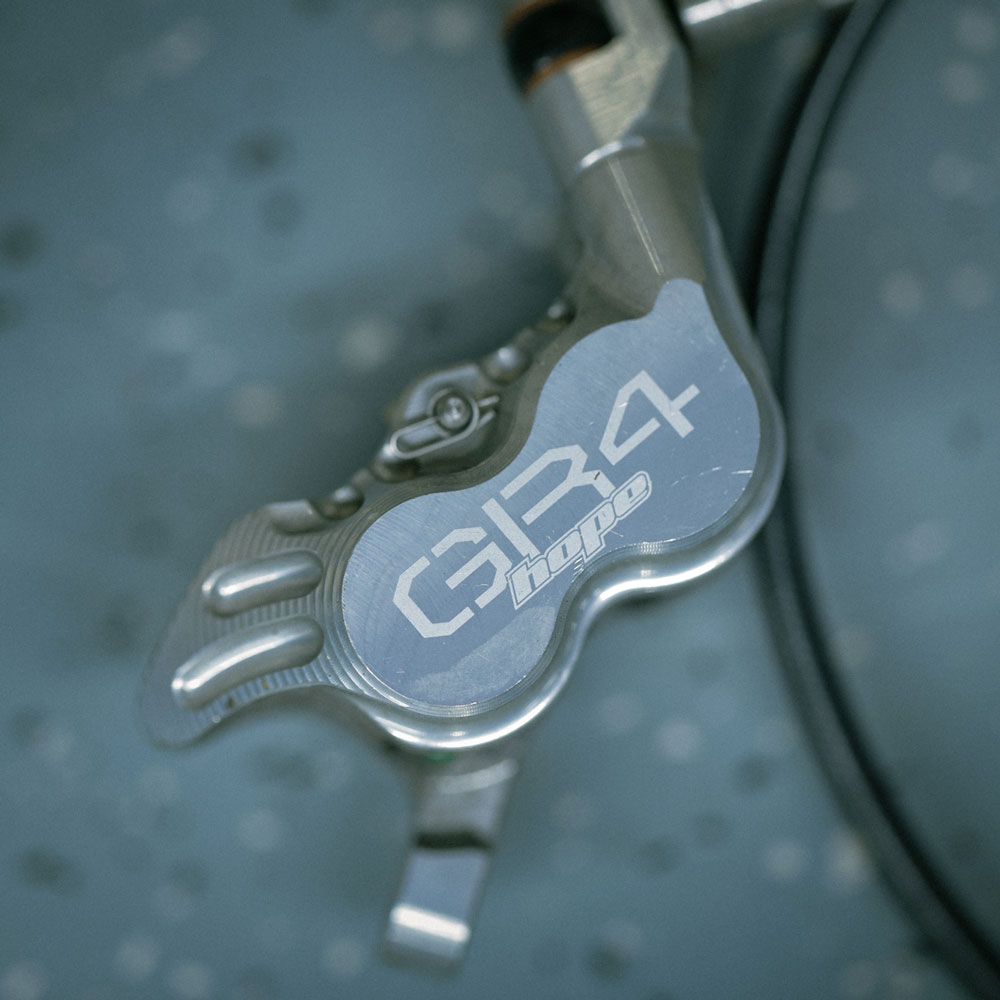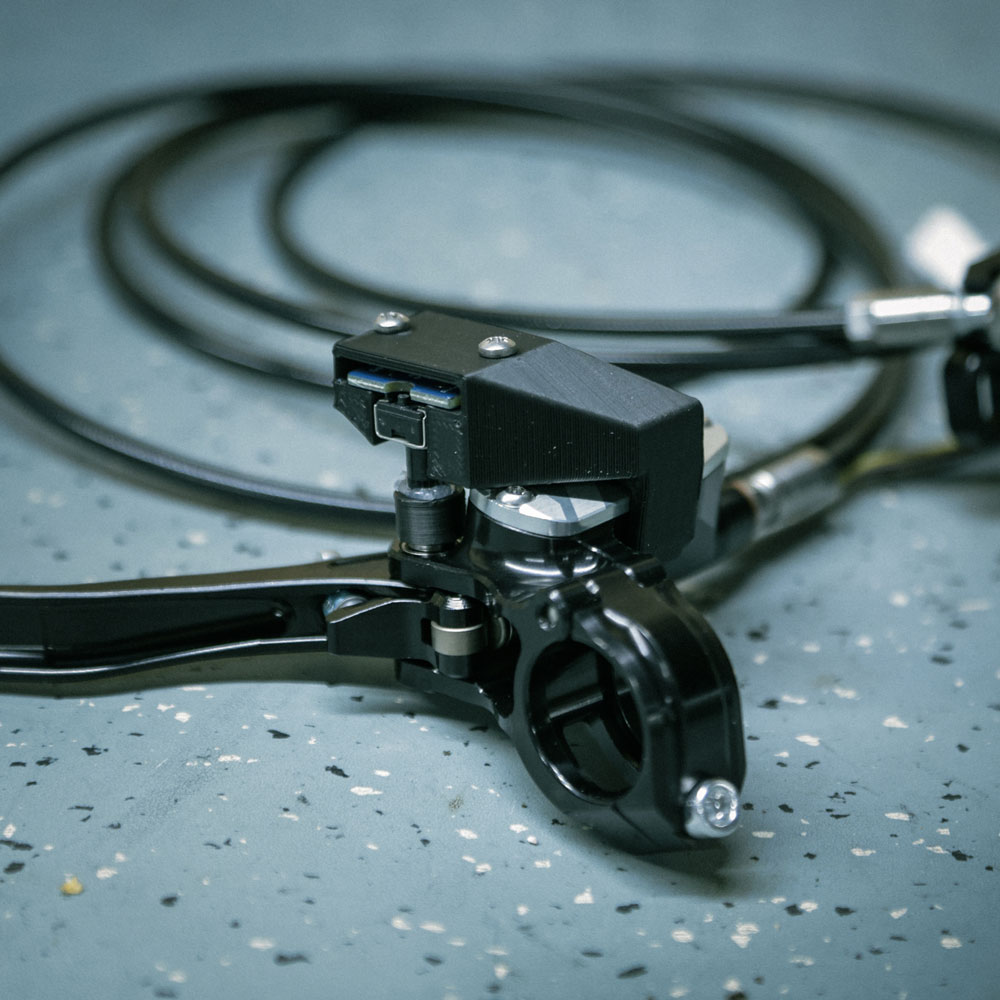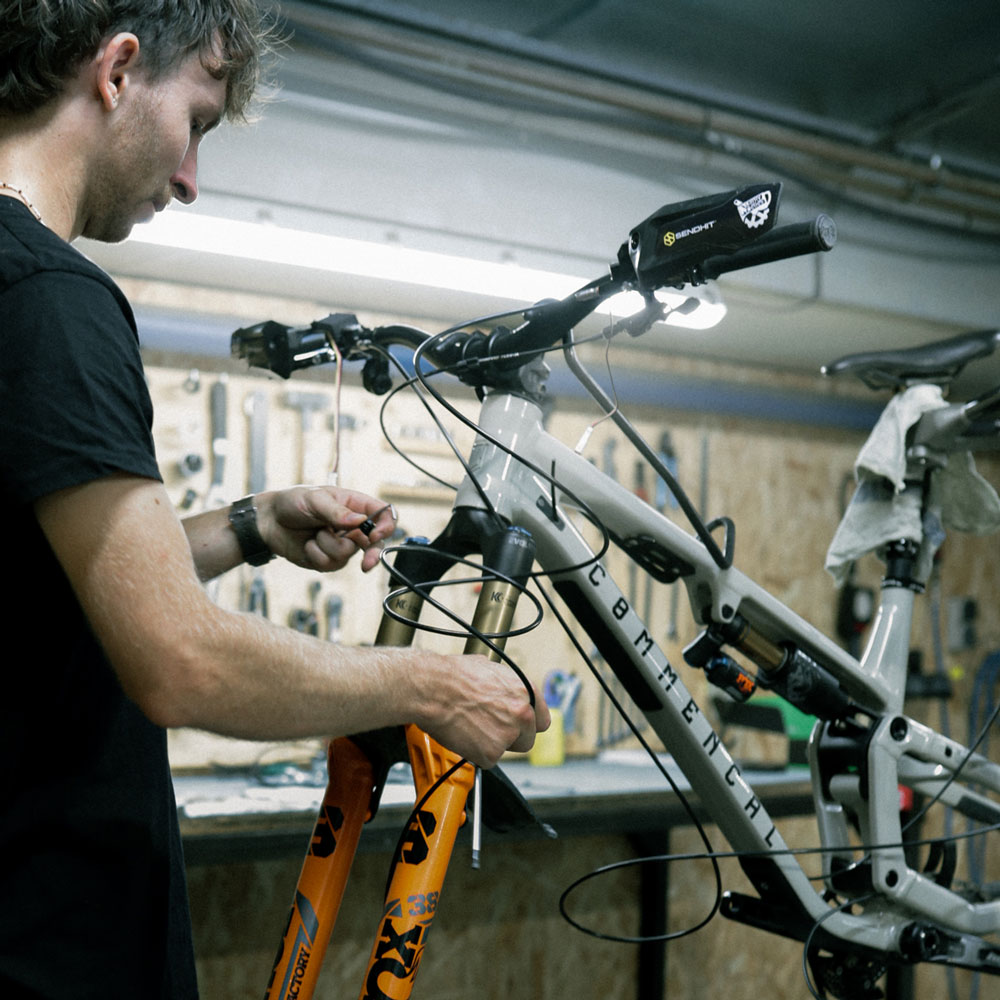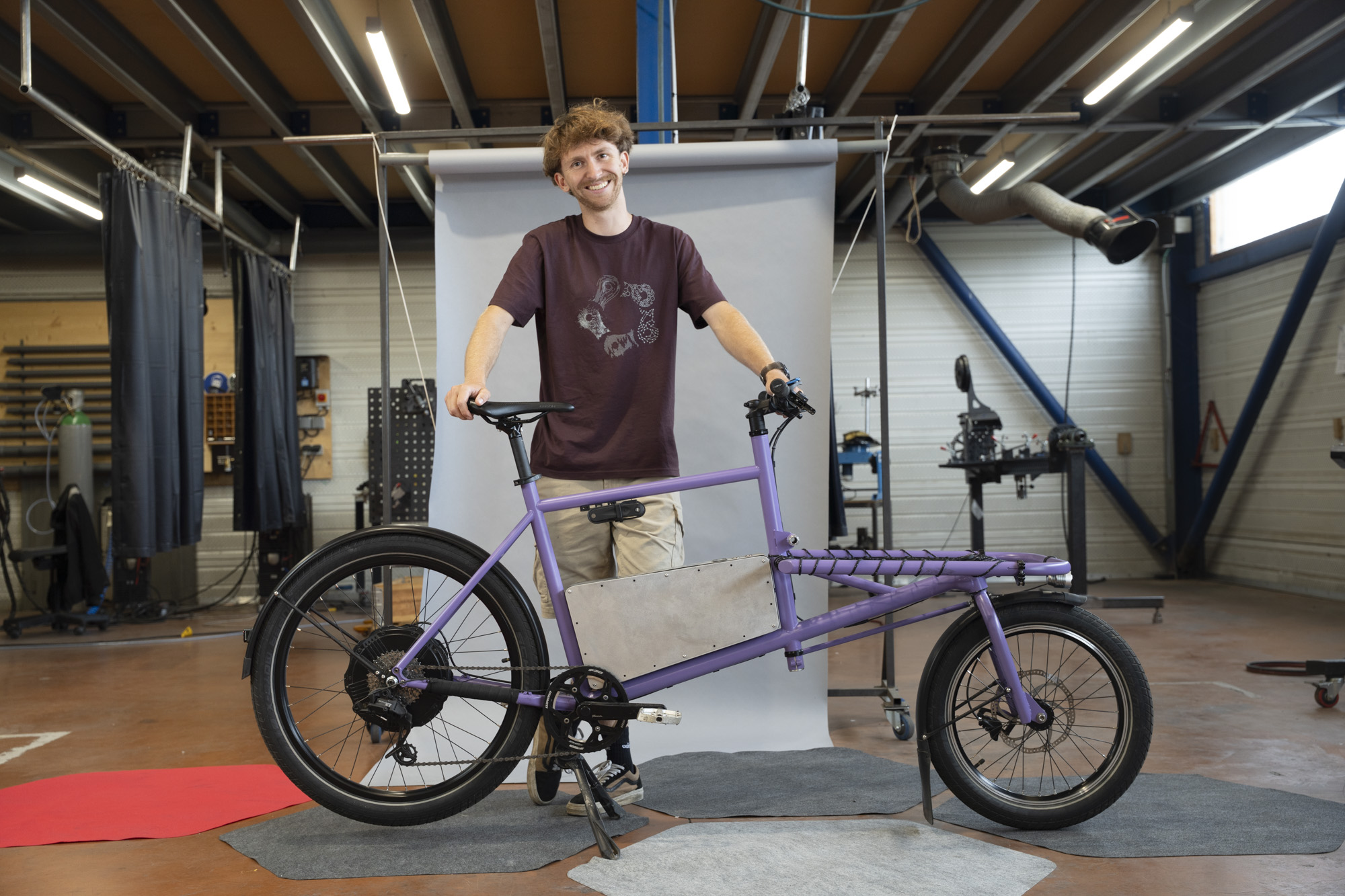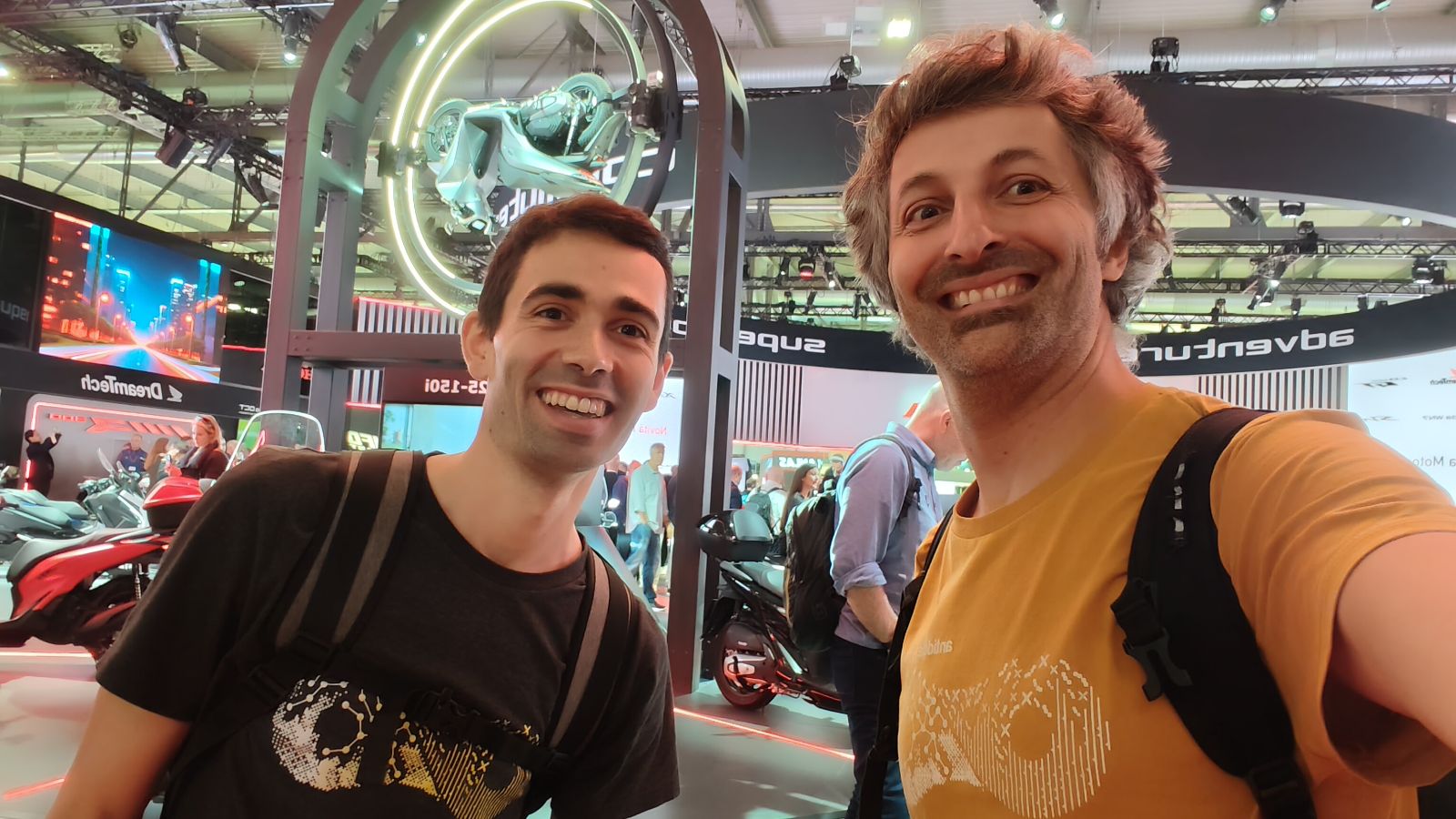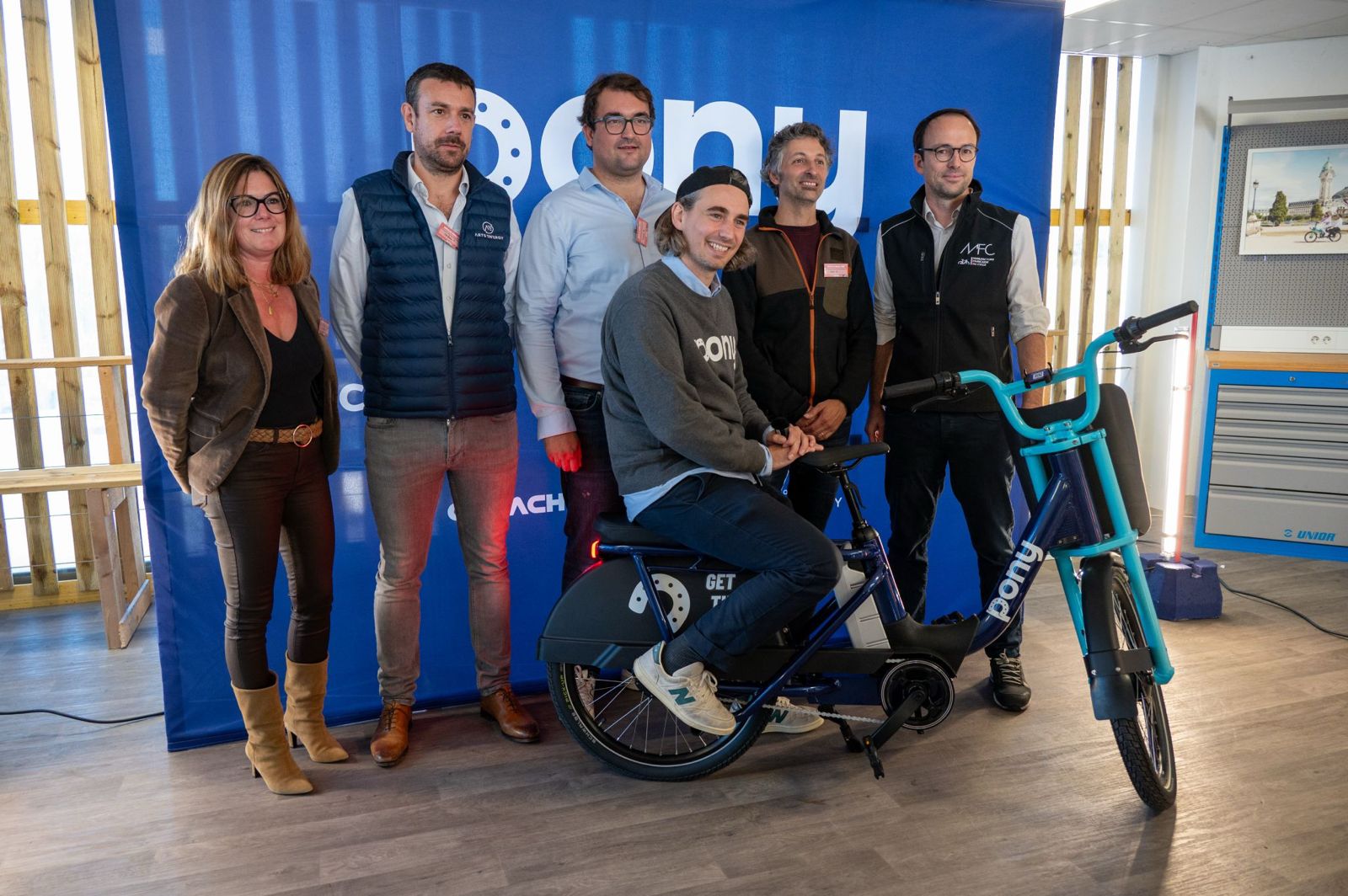1,150m of vertical drop over 3.2km, straight down the slope: that’s the course selected by the Café Manivelles team together with Antidote Solutions to put Hope brakes to the test.
Numbers that speak for themselves!
With an average run time of 9 minutes 45 seconds, a mean gradient of 36%, average speeds of 20 km/h, and peaks reaching 55 km/h, it’s safe to say the brakes were pushed to their limits. The goal was not raw downhill performance but rather consistency and durability: stacking as many runs as possible to truly stress the equipment.
On the bench: the Hope Tech 4 V4 and the brand-new Hope Tech 4 Evo GR4. The latter has just been released, with the first units hitting shops now, following the first model launch back in March 2022.
The ideal test combines an experienced rider’s feedback with on-bike telemetry, on a fixed loop, alternating setups between runs. At the origin of the project, Simon André (who frequently takes part in Antidote tests) and Anthony Marcoux from Café Manivelles asked Antidote to equip the test bike with a telemetry system, and to provide field support and data analysis. A collaboration that will soon result in a detailed Café Manivelles video on their YouTube channel (go follow their channel!)
— Septembre 29 edit : video has been released
Preparation started at Antidote’s workshop, where Nathan, Fred, and Simon readied the Commençal Meta SX for a full day of tests, fitting it with a data acquisition system allowing quick swaps between the two brake sets. The Bagnères-de-Luchon ski resort hosted the project: Simon hammered out 11 back-to-back runs on a brutally straight down slope, with his trademark consistency and commitment. Meanwhile, the engineering team kept pace, switching setups, recording measurements, and carefully noting configurations and rider impressions.
Measurements and observations
The data acquisition setup measured brake lever angle, hydraulic line pressure, calliper temperature, front and rear wheel speed, along with GPS tracking. Cross-referencing and analysing these inputs allowed precise evaluation of brake heat-up and cooldown cycles, response under track stress (intense braking zones, wheel lock-ups, etc.), and ultimately a comparison of the two systems.
You will find the full breakdown in the upcoming Café Manivelles video, but here is a spoiler: the highest calliper temperature recorded was 102.5°C.
